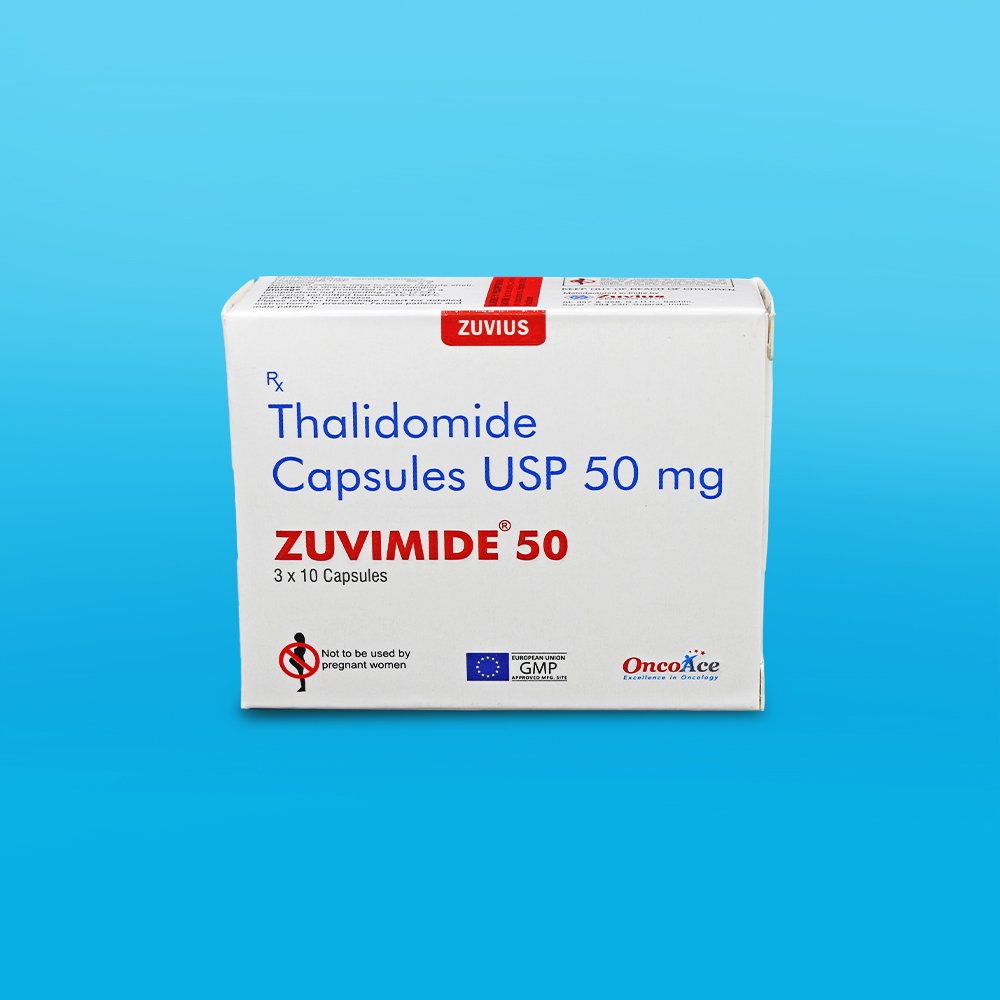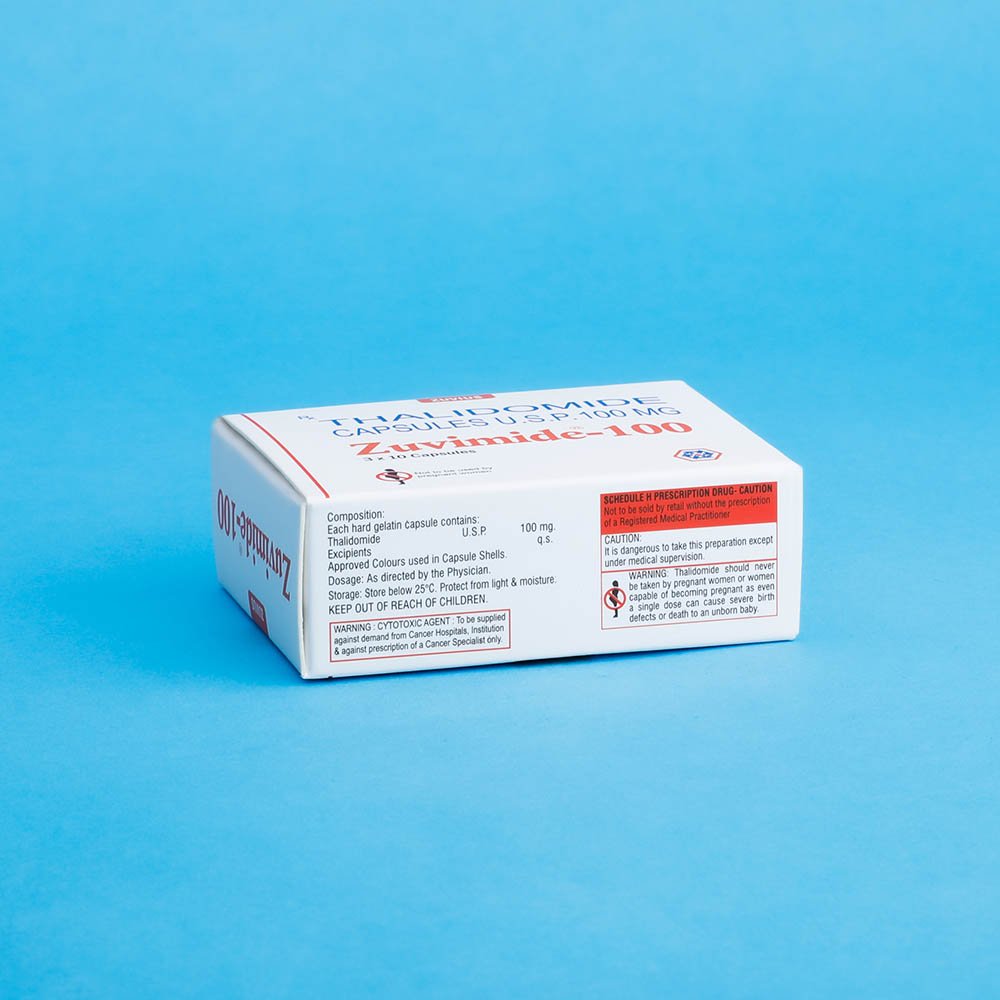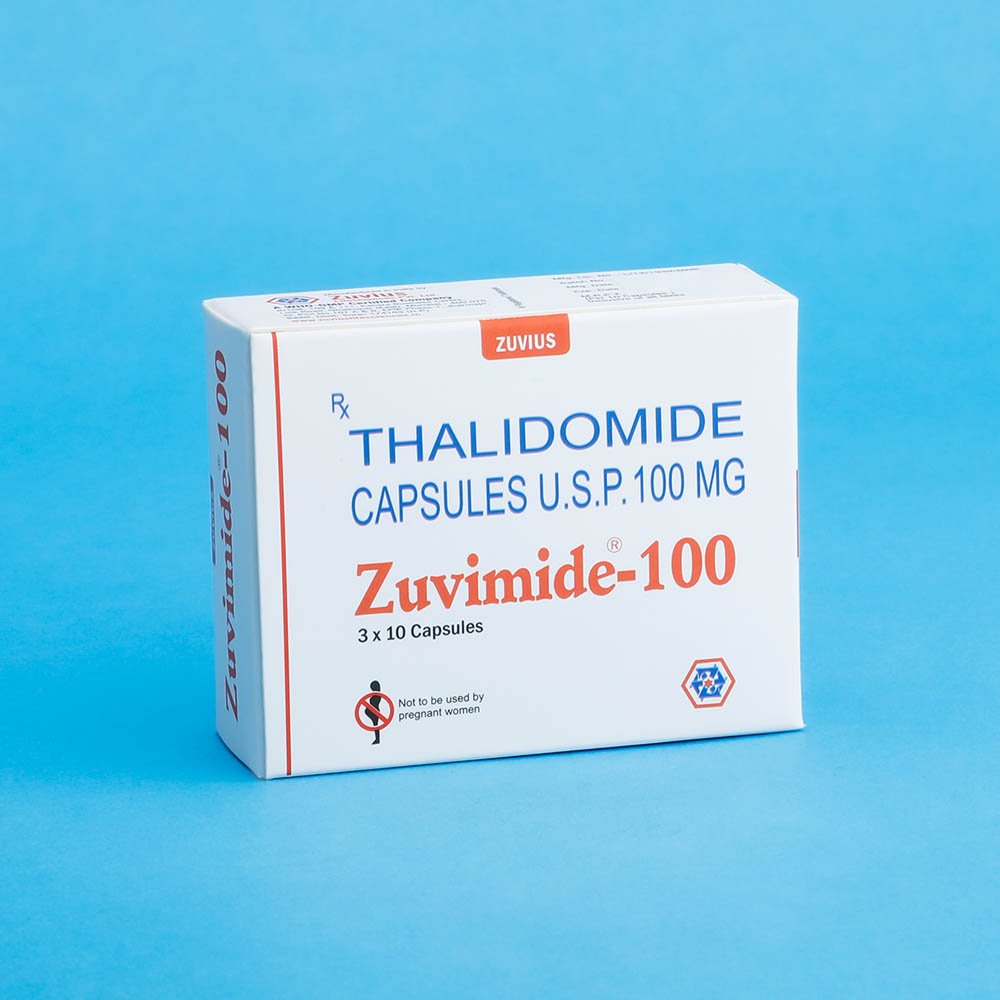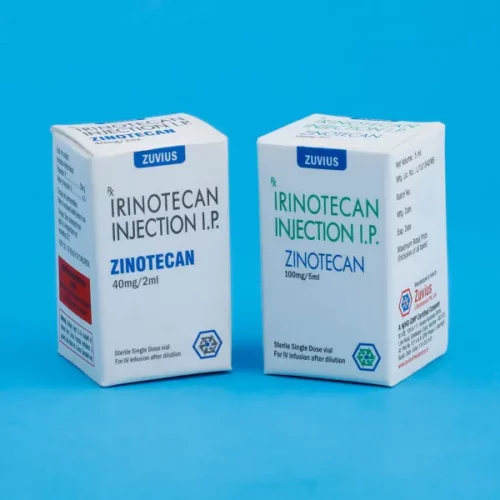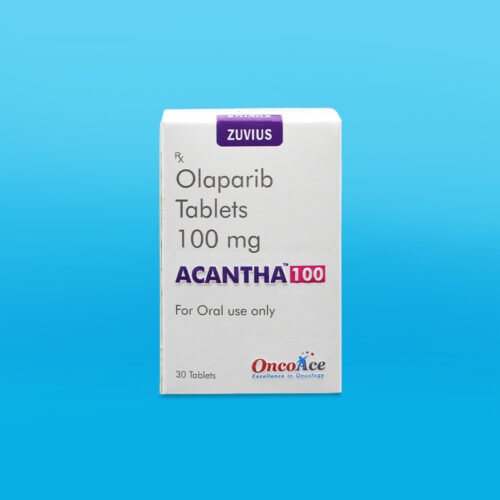Zuvimide Cap- Thalidomide Cap
Thalidomide Cap
Strength: 50mg / 100mg
Pack Size: 1 x 10
Drug Class: immunomodulatory agents
Dosage and Administration:
Tamoxifen is administered orally.
Breast cancer
Adjuvant therapy
When Tamoxifen is used alone as an adjunct to surgery and radiation therapy in the treatment of breast cancer, the usual dosage of the drug is 20-40 mg daily. Dosages exceeding 20 mg daily should be given in divided doses (morning and evening). There is no evidence that higher dosages are necessary. The optimum duration of adjuvant Tamoxifen therapy has not been established, but therapy for about 5 years is more effective than shorter courses of therapy. Longer therapy (i.e. beyond 5 years) with Tamoxifen is not recommended for routine use in women with node-negative breast cancer.
When Tamoxifen is use in combination with chemotherapy as an adjunct to surgery in the treatement of breast cancer in postmenopausal women or in women 50 years of age or older who have positive axillary lymph nodes, the usual dosage of the drug is 10 mg twice daily. The optimum duration of adjuvant Tamoxifen therapy has not been established.
Metastatic Breast Cancer
For the treatment of metastatic breast cancer in women, the usual dosage of Tamoxifen is 20-40 mg daily. Dosages exceeding 20 mg daily should be given in divided doses (morning and evening). Because there does not appear to be any significant difference in response rates with the two dosages, most clinicians believe that 20 mg daily usually should be used initially. If an objective response to the drug occurs, it usually is evident within 4-10 weeks; however, several months of therapy may be required before an objective response occurs in patients with bone metastases.
Reduction in the incidence of breast cancer in women at high risk
For reduction in the incidence of breast cancer in women at high risk, the recommended dosage of Tamoxifen is 20 mg daily. Because of negative findings and a lack of additional benefit associated with more prolonged therapy with drug as an adjuvant in the treatment of breast cancer, a 5-year duration of Tamoxifen therapy currently is being recommended for the prevention of breast cancer in women at high risk of the disease.
Male Breast Cancer
For the treatment of advanced (metastatic) breast cancer in men, the usual dosage of Tamoxifen is 20-40 mg daily. Dosages exceeding 20 mg daily should be given in divided doses (morning and evening). When Tamoxifen alone or in combination with radiation therapy was used as an adjunct to surgery in the treatment of breast cancer in men, a Tamoxifen dosage of 20mg daily was used, usually for 1-2 years. The optimum duration of adjuvant Tamoxifen therapy has not been established; however, since adjuvant therapy of about 5 years appears to be more effective than shorter courses of therapy in women with breast cancer, some clinicians suggest the same prolonged Tamoxifen course for male patients.
Other uses
To stimulate ovulation, 5-40 mg of Tamoxifen has been administered twice daily for 4 days.
Cold Storage: no
Tamoxifen, a nonsteroidal antiestrogen, is a triphenylethylene derivative with both estrogen antagonist on breast tissue and in the CNS and as an estrogen agonist on endometrium, bone and lipids.
Tamoxifen and at least several of its metabolites compete with estradiol for binding to cytyplasmic estrogen receptors in tissues such as breast, uterus, vagina, anterior pituitary, and tumors containing high concentrations of estrogen receptors.
Tamoxifen is used alone as an adjunct to surgery and radiation therapy for the treatment of breast cancer in women with negative axilliary lymph nodes and in postmenopausal women with positive axillary lymph nodes. Adjuvant Tamoxifen therapy reduces the occurrence of contralateral breast cancer in premenopausal or postmenopausal women with breast cancer.
Tamoxifen has been used to stimulate ovulation in appropriately selected an ovulatory women desiring pregnancy, especially in those with oligomenorrhea or amenorrhea who were previously receiving oral contraceptives.
Limited data also suggest that an occasional patient with malignant carcinoid tumor and carcinoid syndrome may have a beneficial response to Tamoxifen.
Severe birth defects, primarily phocomelia or death of the fetus, is extremely high during the critical period of pregnancy. Pregnancy, and women capabel of becoming pregnant.
Pregnancy
Women who are pregnant or who plan to become pregnant should not use Tamoxifen to reduce the risk of breast cancer.
Nursing mother
It is not known if Tamoxifen is distributed into milk. Because of the potential for serious adverse reactions to Tamoxifen in nursing infants, a decision should be made whether to discontinue nursing or the drug, taking into account the importance of the drug to the woman.
Pediatric use
Safety and efficacy of Tamoxifen in pediatric patients have not been established.
Hypersensitivity and bradycardia.

